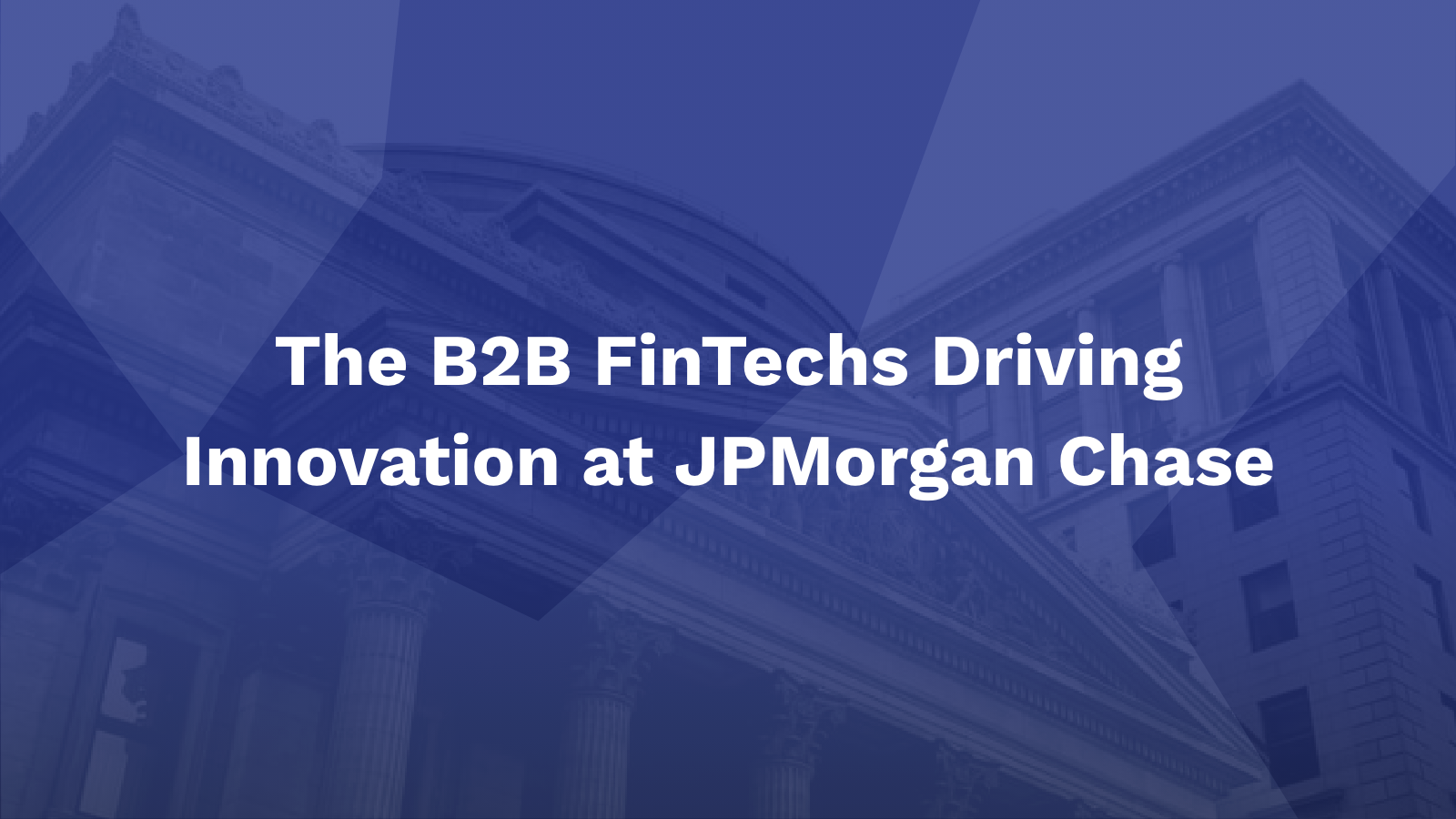
The B2B FinTechs Driving Innovation at JPMorgan Chase
Looking to capture a greater share of business payments, JPMorgan Chase has partnered with agile FinTech businesses like Trovato.io and FISPAN to improve the customer experience and reduce the friction found in traditional commercial banking relationships.
The ultimate goal is to make access to core banking functions, like bill payments and other day-to-day transactions, seamless. Treasury Ignition, a new product from JPMorgan Chase, does exactly that. Treasury Ignition is an “end-to-end” wholesale payments product that can be activated without costly and lengthy technology implementations.
Partnering with FinTechs like us makes it possible for the banks to rapidly introduce and iterate on innovative new products that leverage their experience an expertise. In this case, the objective was to make the treasurer’s workflow more automated and easier to manage. Requirements that Lisa Shields, our CEO (and the former CEO of Hyperwallet is acutely familiar with).
The relationship with us at FISPAN is a salient example of recent moves the bank has made to improve its B2B payments business. Delivering the power of blockchain to the bank's Treasury Services business, JPM Coin brings processes about $5 trillion daily; and its Merchant Service business processes more than $1 trillion each day. To provide greater support to a directory of suppliers who accept digital payments, JPMorgan Chase also joined the Visa and Billtrust Business Payments Network.
“It’s an ecosystem play where JPMorgan and our FinTech partners will deliver banking capabilities in the client’s own Enterprise Resource Planning (ERP) environments,”
-Jason Tiede, Head of innovation for Wholesale Payments.
The Managing Director at JPMorgan Chase and head of the bank's innovation team for Wholesale Payments- Jason Tiede, describes the relationship between the bank and their partners as an “ecosystem.” He notes that “By partnering with FISPAN we were able to take this from idea to live product with approximately $1B in payments flow in less than 18 months.” Acceleration he attributes to their ability to be nimble and customer-centred. “A key element of the story is to behave like the technology and high-growth companies we’re targeting with Treasury Ignition” Tiede said.
Mr. Tiede asserts that “The ERP is the lifeblood of the treasury and finance departments, where clients are performing their core cash management and reconciliation work - invoices, receivables and payables.” NetSuite offers a range of ERP modules to help clients manage their businesses. With JPMorgan‘s Treasury Ignition they can seamlessly embed the banking experience into the ERP dashboard. This integration makes it possible for the bank’s clients to pay their vendors directly, track payments and reconcile bills instantaneously.
Treasury Ignition also displays a list of bills like invoices and vendor payments, along with a payment options such as ACH, wire or check. The transaction is completed with a literal click of a “pay bills” button. What was once a lengthy, multipart transaction requiring multiple log-ins is now executed in moments.
To help manage the transactions, the bank’s customers can also view a history of their payments, balances and payment status notifications that are updated in real time. Users can also reconcile statements without switching between the bank and NetSuite.
Complex supply chains across multiple locations have long been the defining characteristic of B2B payments. As a result of this complexity, innovation has trailed behind consumer transactions. In response, the banks have worked with FinTechs to embed payment processing in other functions, such as billing dashboards or enterprise resource planning systems. However, this new functionality has really only scratched the surface of what is possible.
While the advancements are inspiring, there has been some unforeseen impact. Ryan Masters, executive director of strategic relationships at Swift, spoke at a recent Federal Reserve symposium in Chicago and pointed out that the growth of contract work has created streams of more frequent, smaller-value payments that strain traditional B2B business models. As a result, FinTechs and banks are now coming under pressure to tie payment execution to a wider array of functions such as treasury management, supply chains or accounting.
Echoing Master’s thoughts in an article for PaymentsSource, Steve Robert, co-founder and CEO of Autobooks suggests that businesses surface easy-to-use, integrated ways to accept multiple forms of payments, including ACH, credit, debit, check and lockbox in digital channels. With an eye to eliminating paper and tedious internal business tasks, technology companies such as Bill.com add virtual cards to automate accounts payable for small businesses through partnerships with American Express and Mastercard. In a similar vein companies like Coupa, are introducing elements of the“gig economy” to B2B payments by building a suite of transactions and supply chain management under a single payment experience.
Reflecting on the value of these new services, Erika Baumann, a senior wholesale banking analyst at Aite Groupsays “Corporate clients absolutely value tight integration with ERP systems. The ability to integrate with multiple ERP systems is a must for some B2B services such as integrated receivables and forecasting… Without the ability to pull in the underlying data from ERP systems for forecasting and cash positioning, the output is not accurate.”
While it has really just begun, the race to establish a clear competitive advantage for commercial banks is on and payments are the proverbial starting line. While most banks have the resources to develop these solutions in house, the question remains “should they?” Partnering with FinTechs like FISPAN allows for banks like JPMorgan Chase to set the strategy and objectives while leaving the technical development and delivery to their partners. Embracing an approach that allows participants in a partnership “ecosystem” to play to their strengths is the most direct route to establishing an advantage. Those that do will rapidly accelerate their time to value, while everybody else will still be trying to determine which way to run.
__
If you’d like to learn more about how banks are navigating the future of business banking and driving innovation, check out our blog series (part 1 and 2) “Navigating the Future of Business Banking”.

